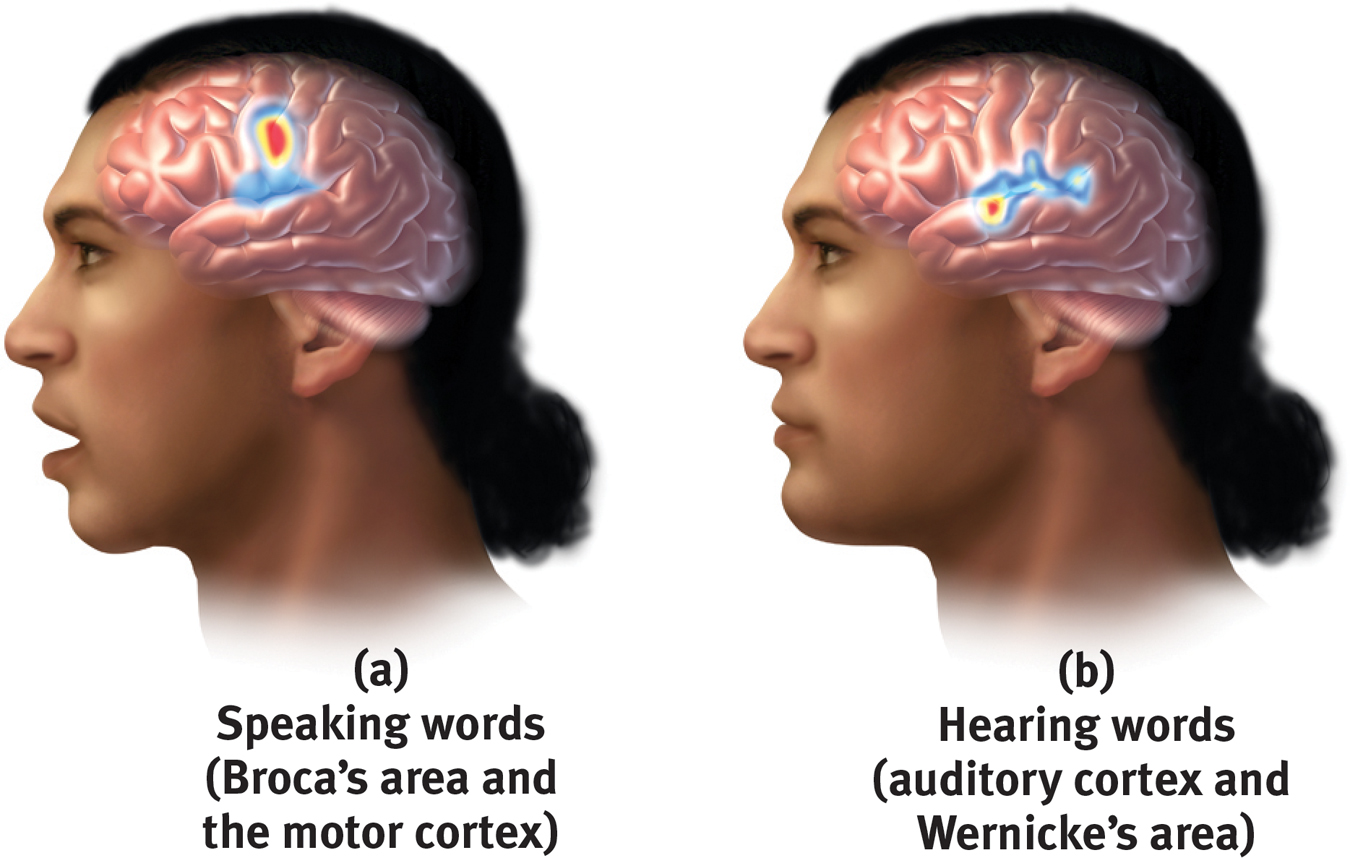28.3 The Brain and Language
28-
We think of speaking and reading, or writing and reading, or singing and speaking as merely different examples of the same general ability—
Indeed, in 1865, French physician Paul Broca reported that after damage to an area of the left frontal lobe (later called Broca’s area) a person would struggle to speak words while still being able to sing familiar songs and comprehend speech.
 To review research on left and right hemisphere language processing—and to test your own speed in processing words presented to your left and right hemispheres-visit Launch Pad’s PsychSim 6: Dueling Hemispheres.
To review research on left and right hemisphere language processing—and to test your own speed in processing words presented to your left and right hemispheres-visit Launch Pad’s PsychSim 6: Dueling Hemispheres.
In 1874, German investigator Carl Wernicke discovered that after damage to an area of the left temporal lobe (Wernicke’s area) people could speak only meaningless words. Asked to describe a picture that showed two boys stealing cookies behind a woman’s back, one patient responded: “Mother is away her working her work to get her better, but when she’s looking the two boys looking the other part. She’s working another time” (Geschwind, 1979). Damage to Wernicke’s area also disrupts understanding.
Today’s neuroscience has confirmed brain activity in Broca’s and Wernicke’s areas during language processing (FIGURE 28.2). But language functions are distributed across other brain areas as well. Functional MRI scans show that different neural networks are activated by nouns and verbs (or objects and actions); by different vowels; and by reading stories of visual versus motor experiences (Shapiro et al., 2006; Speer et al., 2009). Different neural networks also enable one’s native language and a second language (Perani & Abutalebi, 2005).

 Figure 28.2
Figure 28.2Brain activity when speaking and hearing words
“It is the way systems interact and have a dynamic interdependence that is—unless one has lost all sense of wonder—quite awe-inspiring.”
Simon Conway Morris, “The Boyle Lecture,” 2005
The big point to remember: In processing language, as in other forms of information processing, the brain operates by dividing its mental functions—
RETRIEVAL PRACTICE
- __________ _________ is the part of the brain that, if damaged, might impair your ability to speak words. Damage to_________ ________might impair your ability to understand language.
Broca’s area; Wernicke’s area